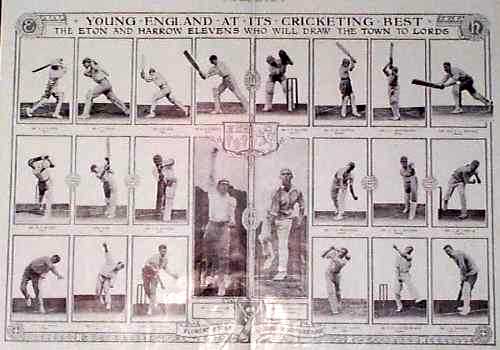How it All Started
How it All Started
Cricket has been traced to shepherds in England who started playing the early forms of cricket sometime in the 17th century. The first laws of cricket were written in 1774. Since then they have been changed on numerous occasions. Pretty much everything has changed since then. The early cricket bats were long curved pieces of wood resembling a thick hockey stick. The stumps consisted of two wickets and one bail in between. The only law of the game that has remained constant is the length of the pitch at 22 yards.
Speaking of the stumps, initially the afore-mentioned shepherds would bat in-front of a tree stump, hence the term “stumps”. As the game progressed it was at times played in front of a wicket-gate – which led to the term “wickets”.
Early bowlers would bowl the ball underarm – and cricket records tell stories of great underarm lob bowlers. Overarm bowling was initially illegal. It was introduced to cricket by a Kent cricketer, John Willes. He actually learnt it from his sister, Christina Willes who found her skirt was getting in the way when she tried to bowl underarm!
In 1868 an Englishman called Charles Lawrence based in Australia put together a team of aborigines and took them to England. This was the first ever Australian tour to England, and each player wore a cap of a different colour so that the spectators could identify them. The team played 47 matches against a number of local teams of which they won 14, lost 14 and drew the rest. Apart from playing cricket the aborigines showcased a number of unique sports including the backwards race, boomerang throwing and cricket ball dodging.
There are 10 ways in which a batsman can get out in cricket: Caught, Bowled, Leg Before Wicket, Run Out, Stumped, Handling the ball, Obstructing the field, Hit the ball twice, Hit Wicket, Timed out.



Cricket has been traced to shepherds in England who started playing the early forms of cricket sometime in the 17th century. The first laws of cricket were written in 1774. Since then they have been changed on numerous occasions. Pretty much everything has changed since then. The early cricket bats were long curved pieces of wood resembling a thick hockey stick. The stumps consisted of two wickets and one bail in between. The only law of the game that has remained constant is the length of the pitch at 22 yards.
Speaking of the stumps, initially the afore-mentioned shepherds would bat in-front of a tree stump, hence the term “stumps”. As the game progressed it was at times played in front of a wicket-gate – which led to the term “wickets”.
Early bowlers would bowl the ball underarm – and cricket records tell stories of great underarm lob bowlers. Overarm bowling was initially illegal. It was introduced to cricket by a Kent cricketer, John Willes. He actually learnt it from his sister, Christina Willes who found her skirt was getting in the way when she tried to bowl underarm!
In 1868 an Englishman called Charles Lawrence based in Australia put together a team of aborigines and took them to England. This was the first ever Australian tour to England, and each player wore a cap of a different colour so that the spectators could identify them. The team played 47 matches against a number of local teams of which they won 14, lost 14 and drew the rest. Apart from playing cricket the aborigines showcased a number of unique sports including the backwards race, boomerang throwing and cricket ball dodging.
There are 10 ways in which a batsman can get out in cricket: Caught, Bowled, Leg Before Wicket, Run Out, Stumped, Handling the ball, Obstructing the field, Hit the ball twice, Hit Wicket, Timed out.









